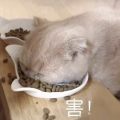【原创】读书笔记-细胞流体间隔中英文翻译-开篇
Discussion of the 3 Fluid compartments and fluid shifting
1、What is fluid compartment?
The two main fluid compartments are the intracellular and extracellular compartments. The intracellular compartment is the space within the organism's cells; it is separated from the extracellular compartment by cell membranes.两个主要的液体隔室是细胞内和细胞外隔室。细胞内隔室是生物体细胞内的空间;它通过细胞膜与细胞外隔室分开
About two thirds of the total body water of humans is held in the cells, mostly in the cytosol, and the remainder is found in the extracellular compartment. The extracellular fluids may be divided into three types: interstitial fluid in the "interstitial compartment" (surrounding tissue cells and bathing them in a solution of nutrients and other chemicals), blood plasma and lymph in the "intravascular compartment" (inside the blood vessels and lymphatic vessels), and small amounts of transcellular fluid such as ocular and cerebrospinal fluids in the "transcellular compartment". The interstitial and intravascular compartments readily exchange water and solutes but the third extracellular compartment, the transcellular, is thought of as separate from the other two and not in dynamic equilibrium with them. 人体总体水的约三分之二被保持在细胞中,大多数存在于胞质溶胶中,其余部分存在于细胞外区室中。细胞外液可分为三种类型:“间质室”中的间质液(周围组织细胞和在营养物和其他化学物质的溶液中沐浴它们),“血管内隔室”中的血浆和淋巴液(血管内)和“淋巴管”,和“跨细胞室”中的少量跨细胞液,如眼和脑脊液。间质和血管内隔室容易交换水和溶质,但第三细胞外隔室(跨细胞)被认为与其他两个隔开,而不是与它们动态平衡。

2、Fluid compartment classification(流体室分类)
• The major body-fluid compartments includ: intracellular fluid and extracellular fluid.主要的体液隔室包括:细胞内液和细胞外液
• Extracellular fluid :plasma, interstitial fluid, and transcellular fluid细胞外液:血浆,间质液和跨细胞液
intracellular fluid:细胞内液
The intracellular compartment is the space within the organism's cells; it is separated from the extracellular compartment by cell membranes.细胞内隔室是生物体细胞内的空间;它通过细胞膜与细胞外隔室分开
About two thirds of the total body water of humans is held in the cells, mostly in the cytosol, and the remainder is found in the extracellular compartment. 人体总体水的约三分之二被保持在细胞中,大多数存在于胞质溶胶中,其余部分存在于细胞外区室中。
Extracellular fluid:
Blood Plasma血浆
• Blood plasma is the straw-colored/pale-yellow, liquid component of blood that normally holds the blood cells in whole blood in suspension, making it a type of ECM for blood cells and a diverse group of molecules. It makes up about 55% of total blood volume. 血浆是血液中的稻草色/淡黄色液体成分,通常将血液中的血细胞保持在悬浮状态,使其成为血细胞和各种分子的一种ECM。它占血液总量的55%左右
• Interstitial Fluid间质液
• Interstitial fluid (or tissue fluid) is a solution that bathes and surrounds the cells of multicellular animals. The interstitial fluid is found in the interstitial spaces, also known as the tissue spaces间质液(或组织液)是一种沐浴并包围多细胞动物细胞的溶液。间质液存在于间质空间中,也称为组织间隙
• Transcellular Fluid跨细胞液
• Transcellular fluid is the portion of total body water contained within the epithelial-lined spaces. It is the smallest component of extracellular fluid, which also includes interstitial fluid and plasma. It is often not calculated as a fraction of the extracellular fluid, but it is about 2.5% of the total body water.跨细胞液是上皮衬里空间中包含的全身水分的一部分。它是细胞外液的最小成分,也包括间质液和血浆。它通常不是作为细胞外液的一部分计算的,而是约为总体水的2.5%
• Such as eye tissue, cerebrospinal fluid, joint cavity fluid如眼组织,脑脊液,关节腔液
3. Extracellular fluid and internal fluid components:(成分)
The essence of extracellular fluid is actually a salt solution, similar to seawater, which reflects to some extent the origin of life in the ocean.细胞外液的本质实际上是一种盐溶液,类似于海水,它在一定程度上反映了海洋中生命的起源。
Composition of tissue fluid: 组织液的成分
1). Water: The most content. For example, plasma contains 90% to 92% water.水:最满意的。例如,血浆含有90%至92%的水
2).Gas: oxygen, carbon dioxide, nitrogen monoxide, etc.气体:氧气,二氧化碳,一氧化氮等
3). inorganic ions: Na+, Cl-, K+, Ca2+, HCO3-, HPO42-, etc.无机离子:Na +,Cl-,K +,Ca2 +,HCO3-,HPO42-等
4) organic compounds: lipids, amino acids, glucose, nucleotides, vitamins and so on.有机化合物:脂类,氨基酸,葡萄糖,核苷酸,维生素等
5.) regulate various hormones of life activities: insulin, sex hormones, etc.调节生命活动的各种激素:胰岛素,性激素等
6. )Cellular metabolic waste: carbon dioxide, urea, etc.细胞代谢废物:二氧化碳,尿素等)
Plasma composition:血浆成分
(1) Water and inorganic salts.水和无机盐
(2) Plasma proteins: such as fibrinogen, antibodies, and the like.血浆蛋白:例如纤维蛋白原,抗体等
(3) Nutrients after digestion and absorption: such as glucose, amino acids, etc.消化吸收后的营养成分:如葡萄糖,氨基酸等
(4) Substances produced by cell metabolism: such as urea, carbon dioxide, and the like.细胞代谢产生的物质:尿素,二氧化碳等
(5) Various hormones transported by blood.血液运输的各种激素
(6) Electrolyte: The electrolyte in plasma consists of cations and anions. The cation is mainly sodium ion and the anion is mainly chloride ion.电解质:等离子体中的电解质由阳离子和阴离子组成。阳离子主要是钠离子,阴离子主要是氯离子。

仅作个人学习交流用,请勿转载,有不对地方欢迎转载,谢谢哇~
















































